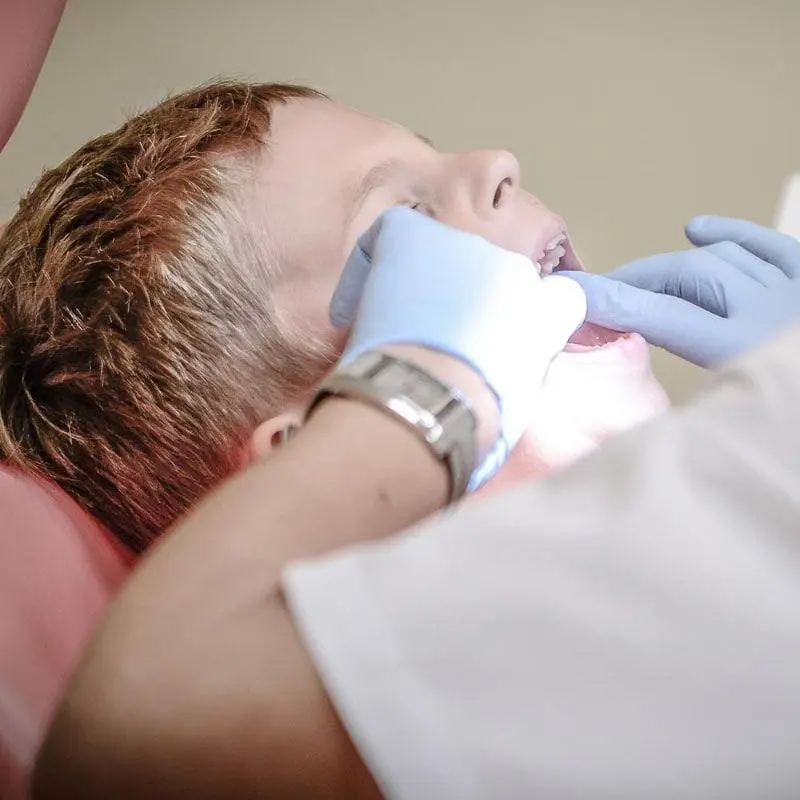An orthodontist specializes in esthetic alignment of the teeth. This means that orthodontic alignment such as braces and clear alignment treatment (ex. Invisalign) is the primary focus of an Orthodontist. After dental school, the orthodontist will receive a dental degree and then go through 2-3 years of specialty residency.
Taking it a step forward to provide the upmost standard of care and a clear difference in the result of orthodontic treatment, about 25% of Orthodontists become board certified by the American Board of Orthodontists.
Eye for an eye, tooth for a tooth, right? Not when it comes to dentistry and orthodontics! Even in the world of dentistry, there are different specialists, but in general dentistry, they focus on the teeth, gums, tongue, and mouth, as a whole picture. In the world of orthodontics, they have completed general dentistry and took another step into diagnosing and treating misaligned teeth and jaws.
How Do You Become A Dentist?
With that clarification between a dentist and an orthodontist, let’s go more into details about a dentist and what their profession does. A dentist is a doctor of oral health in humans.
To become a dentist, you must attend college for four years and graduate with a bachelor’s degree as an undergraduate. Then to get into general dentistry, you must attend four years of dental school. There you earn a Doctor of Dental Surgery (DDS) or a Doctor of Dental Medicine (DDM). If you want to specialize in a specific area of dentistry, you must complete a dental residency in that field, which can be another 2 to 4 years.
This extensive education and training are required for a dentist to be certified and legally licensed to practice. Approximately 80 percent of those that start the path of dentistry will stay with general dentistry with 20 percent going on for specialization.
What Does A Dentist Do?
With that education, you become a certified dentist that can provide a diagnosis and treatment plan for a person’s oral health condition. This includes not just the teeth and gums, but the tongue, and entire mouth. A dentist is trained in basic teeth cleaning, but typically their dental hygienist will provide that treatment.
A certified and license dentist can provide the following dental care:
As a dentist cares for a patient, they discuss and promote oral health and oral hygiene. They recommend regiments for at-home dental care and request follow up visits to maintain the patient’s dental health.
How Do You Become an Orthodontist?
An orthodontist is a doctor of oral health too but have a specialty in tooth and jaw alignment. To become an orthodontist, you need to complete the same dental education as a dentist, and then you must complete an additional education for orthodontics. After 4 years of college for a bachelor’s degree, 4 years of dental school, then you must complete an additional 2 to 3 years for orthodontic specialty certification.
Like a medical doctor, a dentist goes through extensive training for their preferred specialty. Once dental school is complete, graduates must pass the National Dental Examination to become a licensed Orthodontic professional.
Once you have completed and passed an orthodontic residency program, you must complete additional certification testing with the American Board of Orthodontics. At that time, you can open a practice or join an existing practice as an orthodontist.
What Does an Orthodontist Do?
A certified orthodontist can diagnose the health condition of a patient’s gums, jaw, mouth, and teeth. They can then set up a treatment plan to align and correct any issues with a focus on making sure the jaw and teeth are in proper position.
A certified and licensed orthodontist can provide the following services:
Who should you see a Dentist or an Orthodontist?
Start with your dentist, much like you would start with your medical general practitioner who will then refer you an orthodontist, like your GP would refer you to a specialist. Why? Because many our standard dental needs are resolved by a dentist, like tooth aches, tooth decay, tooth extraction, and tooth repair. After examination and X-rays, the dentist will diagnose the problem and provide a treatment plan. They can diagnose gum disease, oral infections, oral inflammation, and provide treatment.
If the dentist diagnoses a patient with jaw malocclusion, crowded teeth, or palate expansion, they will refer you to an orthodontist specialist. Adults with crooked teeth and misaligned jawline should skip the dentist and start treatment with an orthodontist that treats adults. It is recommended for children under the age 7-years-old have an orthodontist appointment to access what needs they may have forthcoming.
A Side Note
Dental insurance doesn’t always provide coverage for orthodontic care. Because this is considered a specialty. Some dental insurance policies will pay for the initial consultation appointment with the orthodontist after your general dentist has referred you.
Differences Between a Dentist and Orthodontist Takeaways
Dentists and orthodontists both go through an extensive education and training for two different types of oral healthcare. They both specialize in diagnosing and treating different types of oral health conditions with the orthodontist having additional training in specialization that a dentist doesn’t.









